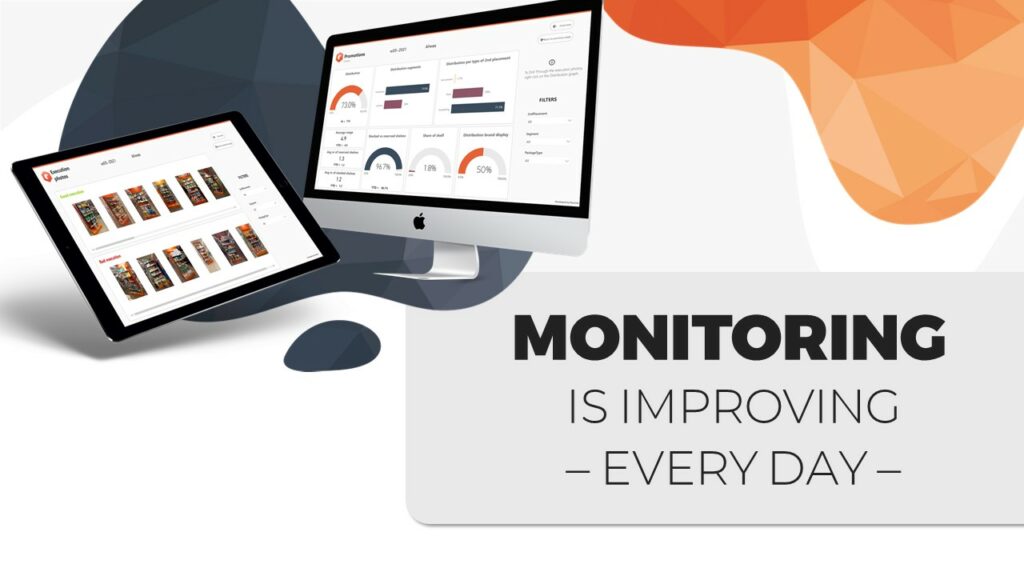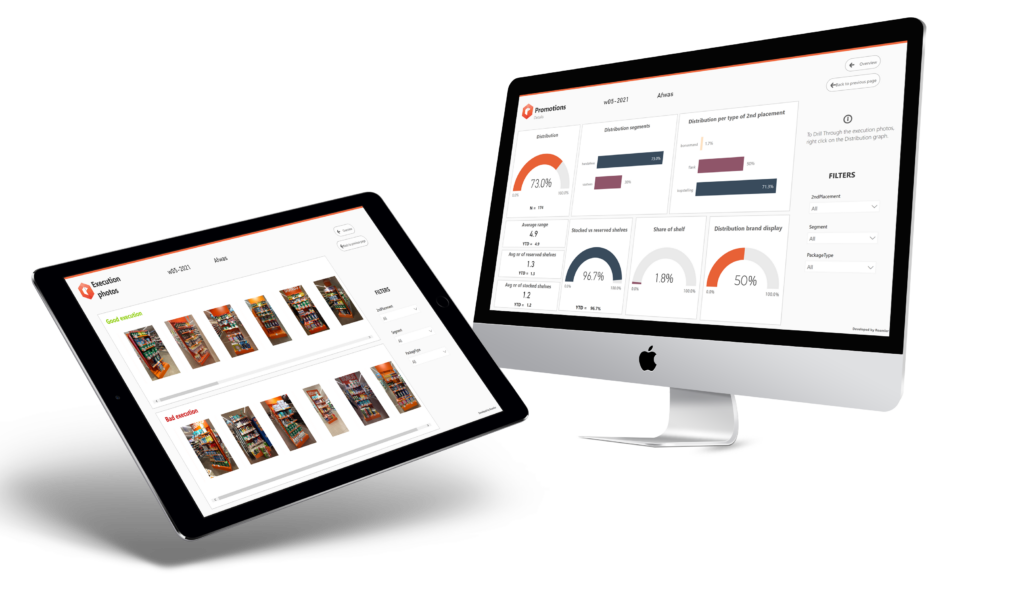
Text: Bas van Herwaarden and Thomas van Zoggel, Roamler, in FP Work.
In retail execution, a lot is being measured. And that’s a good thing, as it allows us to make improvements that lead to ‘the perfect store’. Often, however, measurements on the shop floor are one-off and ad hoc, while repeated and frequent measuring has many advantages. Especially for components such as promotions and On Shelf Availability, since it’s giving retailers and suppliers the opportunity to really focus on improving – every day.
In our opinion, retail execution should be seen as a structural activity in which the same components keep recurring. Currently, agreements are made regarding these components, such as product availability, second placement and share of shelf, which apply for a longer period of time. Structural monitoring agreements would be a logical addition to these long-term agreements. However, within the retail industry this is currently not the norm. Unlike in many other industries.
Third-Party Monitoring as a standard
Take, for example, the telecom industry. If a supplier sells you a service with an ‘up time’ of 99.5% (the number of hours that a website is online in a certain period of time, ed.), you will at least be skeptical if the same selling supplier tells you that this target of 99.5% has been met. That’s why, in this industry, ‘Third-Party Monitoring’ is used in order to be able to independently determine that promises by the selling supplier are kept.

Repeating: many advantages
Repeating measurements have many advantages. What are those advantages? Let’s take the component ‘On Shelf Availability’ as an example, as this is still by far the most frequently measured component; (for now) also one-off.
1. You discover context and trends
What does a one-time measurement of 92% On Shelf Availability tell in itself? In our opinion: not much. It’s a nice observation, but what if the same ‘OSA’ (‘On Shelf Availability’) was 98% a week before? And 87% the week after? Then, suddenly there is context; a trend. Trends help retailers and suppliers to better explain what’s happening on the shop floor and to find out where the cause of issues lies (‘root causing’).
2. ‘Actionability’: you can act
With a score of 87% on On Shelf Availability, both the retailer and supplier miss out on potential turnover by 13%. By charting this financially, there is an urgency to jointly think about a solution and take action.
3. Lower relative costs
Engaging a supplier once for an investigation entails many hidden costs, in addition to the actual (out-of-pocket) costs. Think of the people involved in decision-making, and the administrative burden to organise purchasing and invoicing. Each time an ad-hoc request is made, these costs are charged again. For a monitor, this is a one-off action, after which the results are periodically available without extra effort and costs.
4. Easier business operations
If you make sure that monitoring becomes a standard practice of daily business operations, you no longer have to ask yourself what your On Shelf Availability is; you already know it! And, even more important, you can intervene as soon as the lights on the dashboard turn orange.
“Suddenly there is context; a trend. Trends help retailers and suppliers to better explain what’s happening on the shop floor and to find out where the cause of issues lies (‘root causing’).
Execution vs EPOS
It is interesting to look at the use of EPOS or cash register data (EPOS stands for ‘Electronic Point of Sale Systems’, ed.). A lot of companies have a subscription on this, giving them a continuous flow of this data. Imagine combining this data with a similar subscription for ‘in-store execution data’. The combination of the two provides real insight into the ‘drivers of the business’. As such, multiple sources of data are complementary to each other. This requires analysis, but does provide a complete picture, based on which assumptions can be validated.

One-off or continuously?
Not all components need to be measured on a frequent basis. It depends on the dynamics of the component. If a shelf is only revised once or twice a year, no substantial changes will happen aside from those mutation moments. In this case, a quarterly measurement is a sufficient frequency. For promotions or On Shelf Availability, however, continuous monitoring is better suited.
It becomes even more interesting when you utilise so-called “syndicated” or “multi-client” studies, where multiple parties subscribe to the same information. This is, for example, a regular way of working when collaborating with companies like Nielsen, IRI and GfK. It’s also happening more and more for retail execution. For example, at Roamler we work with the ‘Promo Insights monitor’, with which all permanent promotion places at hundreds of stores are mapped on a weekly basis. It gives suppliers insight into all relevant categories, enabling them to compare their own promotions with promotions of the competitor.
Transparency and joint growth
Identifying a problem once can lead to improvements in the collaboration between retailer and supplier. Integrating an ‘always-on monitor’ in the periodic discussions between both parties leads to a transparent partnership, a mutual responsibility for optimisation and, ultimately, joint growth. Monitoring facilitates constructive and open discussions between retailer and supplier.